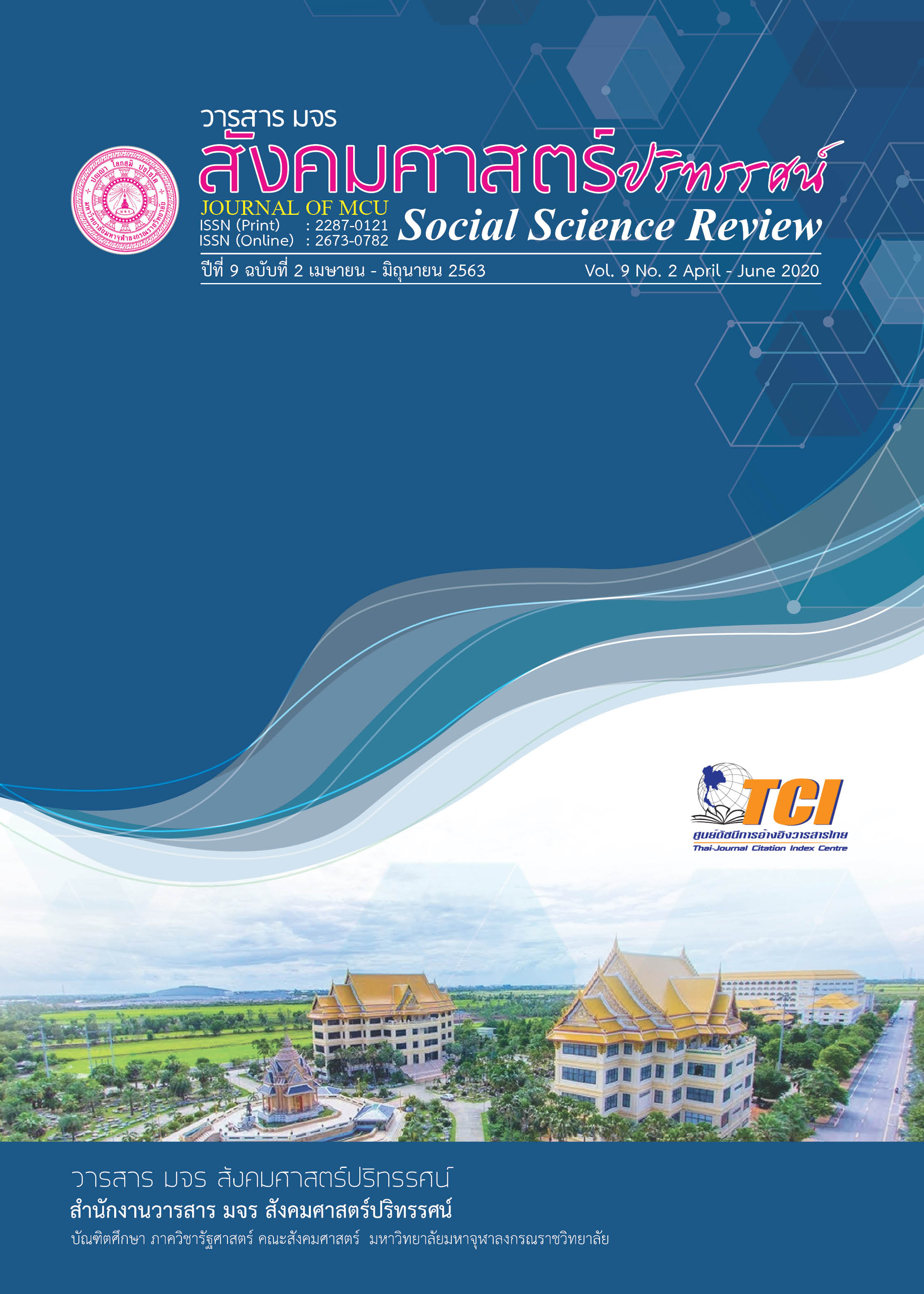MANAGEMENT OF AYUTTHAYA, UNESCO WORLD HERITAGE CITY FOR CULTURAL TOURISM
Keywords:
Management, Ayutthaya world heritage city, Cultural tourismAbstract
Objectives of this research were to study general conditions of management of Ayutthaya , UNESCO World Heritage City for cultural tourism, affecting factors and an appropriate model for the management, conducted by mixed methods research. Findings were that the general conditions of management of Ayutthaya , UNESCO World Heritage City for cultural tourism was not moderately efficient, still confronted with some problems and obstacles. Many tourist attractions and historic sites were not properly maintained. As for the factors affecting the management were 4 M's and POSDCoRB management principles when integrated with Sappurisadhrama had high level of positive correlation respectively as r = 0.760, 0.947, 0.907 with statistical significant value set at 0.05. The Appropriate models of the management of Ayutthaya, UNESCO World Heritage City revealed 6 model: Tourist attraction management model; Physical management model; Accessibility to tourist attractions model; Participatory model; Responsibility model and Worthiness model.
References
Boonsomkiat, W. (2012). Guidelines for the Development of Cultural Tourismin Nakhon Si Thammarat Province: Wat Phr aMahathat Woramahaviharn Wat That Noi and WatMokkhan Archaeological Site (A Thesis of Master of Arts Tourism Management Program), Bangkok: Dhurakij Pundit University.
Bunphirom, S. (2009). Academic Administration = Academic affairs Administration. Bangkok: Bookpoint.
Greffe, X. (2004). Is Heritage an Asset or a Liability. Journal of Cultural Heritage, 5(3), 301-309.
Leklersin, S. (2016). Administrative Efficiency of Administrators in Sub-district Administration Organizations in Nonthaburi Province (Research Report). Bangkok: Rajapruek University.
Mahantarat, T. (2016). Integrate The Holistic Guidelines for Protecting World Heritage Sites The Case of Phranakhon Si Ayutthaya Historical Park and Satellite Towns. Old Rajabhat Research Journal, 13(2), 79.
Phradhammapidok (P. A. Payutto). (1995). Buddhist Dictionary Vocabulary version. Bangkok: Mahachulalongkornrajavidyalaya University Printing.
Phramahasuwit Panyadit. (2013). Administration according to the sappurisadhamma of administrators in secondary schools Under the Office of Educational Service Area. Secondary Education, Region 1. Journal of Western Rajabhat University, 8(1), 9.
Phrasombat Butthasit. (2016). World Heritage Management Process Luang Prabang Subdistrict Laos People's Democratic Republic. Journal of MCU Social Development, 2(3),74.
Rangsiyokrit, S. (1997). Government Reform: Concepts and Strategies. Bangkok: Office welfare.
Rattanaphongthara, T. (2016). Guidelines for Cultural Heritage Tourism Development in PhraNakhon Si Ayutthaya Province. Journal of Social Communication Innovation, 4(2), 34.
Sammapet, S. (2014). Administrative Resources and Operational Effectiveness of The Central Special Correctional Institution Bangkok (A Thesis of Master of Public Administration). Bangkok: Krirk University.
Tanprayoon, P., & Tamalee, K. (2018). Ayutthaya Tourism ManagementWorld Heritage City. Journal of Loyaialongkorn Review (Humanities and Social Sciences), 8(3), 171.
Thongborisuth, K. (2018). Management of the World Heritage City areas in theprovince PhraNakhonSi Ayutthaya, PhraNakhon Si Ayutthaya Municipalityaccording to the sufficiency economy philosophy. SrinakharinwirotJournal (Humanities and Social Sciences),10(19), 20-32.
Yamane, T. (1973). Statistics : An Introductory Analysis (3rd ed.). New York: Haper and Row.
Downloads
Published
How to Cite
Issue
Section
License
Copyright (c) 2020 Journal of MCU Social Science Review

This work is licensed under a Creative Commons Attribution-NonCommercial-NoDerivatives 4.0 International License.
In order to conform the copyright law, all article authors must sign the consignment agreement to transfer the copyright to the Journal including the finally revised original articles. Besides, the article authors must declare that the articles will be printed in only the Journal of MCU Journal of Social Sciences. If there are pictures, tables or contents that were printed before, the article authors must receive permission from the authors in writing and show the evidence to the editor before the article is printed. If it does not conform to the set criteria, the editor will remove the article from the Journal without any exceptions.





